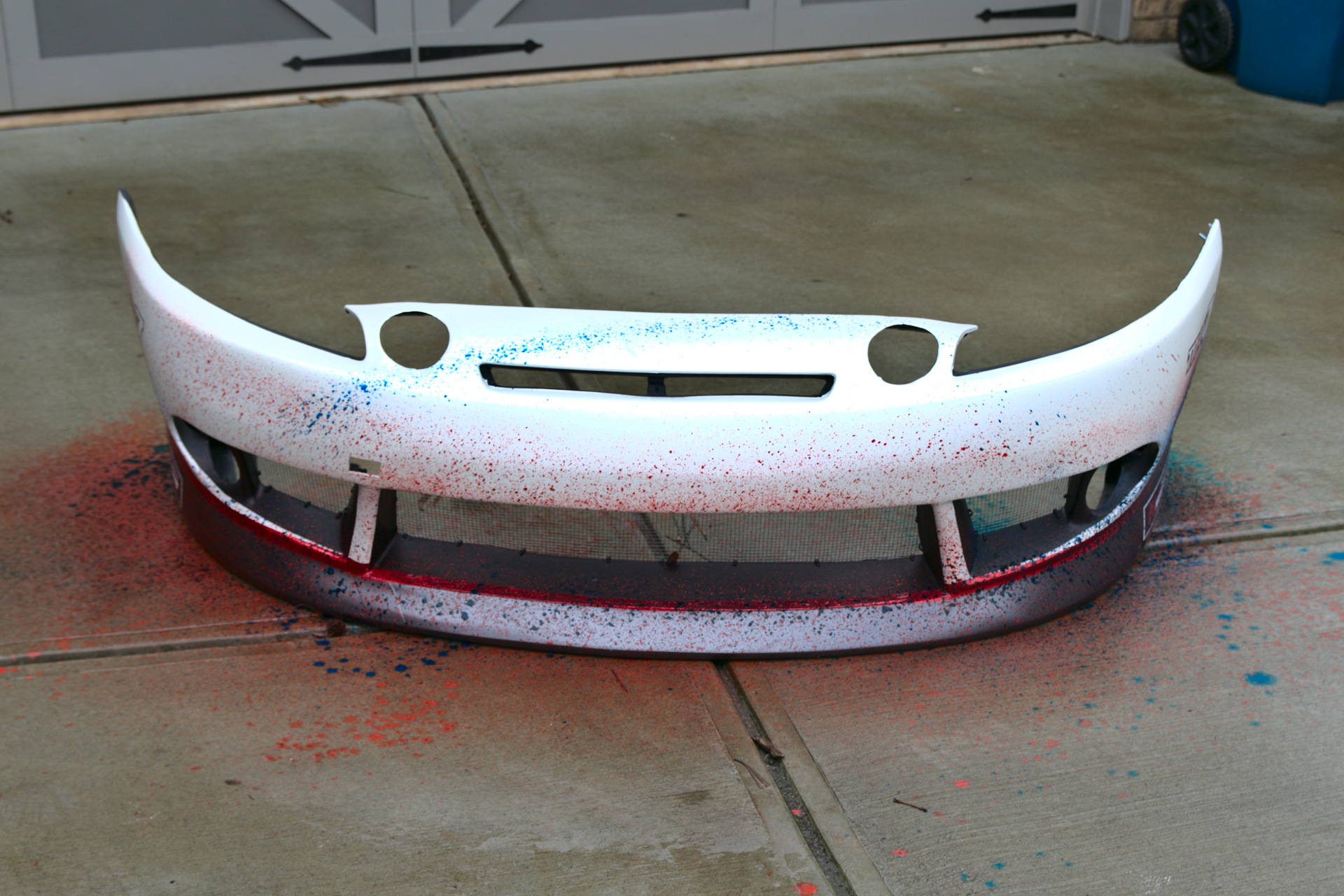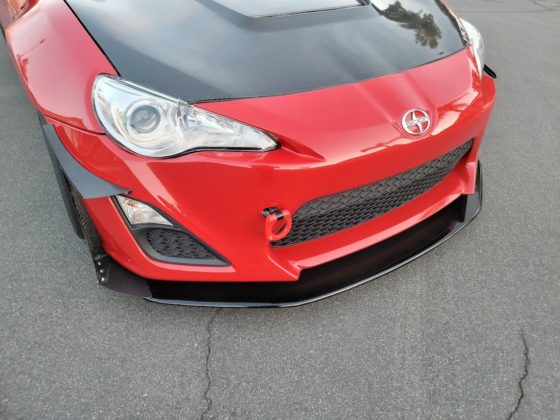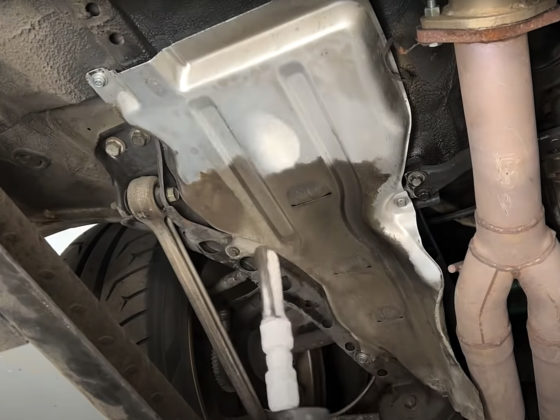
Project SC300 Road Racer: Part 35 – The Wang Gang is Splitting Up
by Erik Jacobs
It’s been a little while since I last penned (typed?) a Project SC300 update. But I have not been entirely idle. Life began to normalize, and a plan was formed to get to the track more often. A long time ago, we installed our Nine Lives Racing wing. And not that long after, Rob Lindsey from Morlind Engineering came by to take more scans of the car.

Because the front of the car is where a splitter goes. Following pretty much the same process as with the wing, the speckled dot photos are converted into a 3D model and then some basic CFD analysis is performed. Well, in the specific case of Project SC300, really no CFD analysis was done because the rules for NASA’s ST class are quite open. The NASA rulebook states:
“Aerodynamic devices and/or modifications may not protrude more than six (6”) inches from the vertical plane from the ground to the widest part of the right and left sides of the vehicle’s body. Front wing/spoiler/foil/splitter may not protrude more than 12 inches in front of the outermost edge of the front bodywork/fascia, and may not be higher than the lowest part of the vehicle’s hood.”
TWELVE INCHES? OK, well, we have something to work with.

The KBD bumper is flexible and wasn’t attached to the car, but the previous kit was gnarly fiberglass and held its shape. Rob took some measurements off it. The previous splitter was just a piece of ABS plastic that I hacked into shape and then pop-riveted into the bumper. It was pretty ghetto and was primarily there to act more as an undertray in an attempt to direct airflow through the radiator, as opposed to generating any appreciable downforce.

The measurements will be used to figure out the width of the splitter (related to the 6-inch outside-the-body limit), as well as its overall depth (related to the 12-inch limit), and where the end of the bumper is. Because of the way the rules are written, the splitter could have been designed as a giant one-piece combination splitter and undertray that went well behind the front axle. But a flat bottom isn’t necessarily the best aerodynamic solution, and we don’t have a full car scan for CFD, and that’s expensive. So, here we go.




4 comments
Have you stood on the splitter to check for flexing, yet? That’s the ultimate test. You can’t imagine how much load these generate at high speed. Just imagine the force against a 1 sq/meter plank of wood during a hurricane 150mph!
Wind Load Calculator
Dynamic pressure (N/m2, Pa): 2940
Wind Load (N): 2940=660lbs
Also, I would argue that a flatbottom is the ideal aero solution for any car. Of course, it’s just a starting point because you want to attach strakes and flow diverters around the wheels to redirect turbulence.
“Have you stood on the splitter to check for flexing, yet? ”
No, and I probably wouldn’t. That’s not a realistic approximation of the load that the splitter experiences. It’s a point load. It’s a good test in the sense that if it doesn’t flex while experiencing an extremely unrealistic loading, it’s probably strong enough. But it’s not a realistic test.
“Just imagine the force against a 1 sq/meter plank of wood during a hurricane 150mph!”
Your load calculation is also quite off the mark, I think. A splitter does not receive load against its flat surface. It’s an airfoil, not a wall. That load calculation is for wind pressure hitting a flat surface straight on. It is not the load calculation of an airfoil’s lift force at 150MPH. If I had a full 3D scan of the car (Rob Lindsey, are you listening?) we could calculate the lift of the splitter to determine the amount of downforce it provides. For a simple, flat splitter with minimal rake and no additional aerodynamic aids (the current configuration) I do not believe I am going to be generating hundreds of pounds of force. Maybe 100-150. It’s a good question for Rob.
“I would argue that a flatbottom is the ideal aero solution for any car. Of course, it’s just a starting point”
This is a contradictory statement. If it’s the starting point, it’s not ideal. Ideal and best are nearly synonymous. It means there is no room for improvement.
Is a flat bottom better than nothing / OEM bottom? Possibly. It would require testing.
Is a flat bottom the best (ideal)? No. Additional aerodynamic devices will be better than a flat bottom.
On the C5 Corvette CFD, with a similar size splitter, we saw a topside area/pressure of ~200in^2/2000pascals and an underside of ~350in^2/2500pascals. This ends up at roughly 200lbs at 150 mph but that load is distributed across a ~50″+ width.
*Note that the addition of a splitter may well add more than that amount of downforce due to changing the overall flow structure. It impacts the amount of air going under the car and around the sides which can prevent lift in other areas of the car.
Having said that, stiffness does matter (to prevent oscillations, damage, porpoising) so being able to stand on your splitter is useful, but it’s far from required.
You can see similar results in the work on the 350Z we did for Grassroots: https://grassrootsmotorsports.com/articles/against-wind-part-2/
Well, of course, it’s not going to see 660lbs, that’s a worse case scenario if it was perpendicular to the flow stream, but I wouldn’t doubt that it would see a substantial amount of that load. I would probably guess somewhere around 300lbs at 150mph, because it’s at the stagnation point and the dynamic pressure is very high on the bumper. The air has nowhere to go, and is forced to change direction and that’s what makes a splitter so effective. Also, consider that the center of pressure is located about the midpoint of the splitter, so there’s a moment arm and a substantial amount of torque is being generated on the mounting point. Any amount of flex is going to open up gaps and make the splitter less effective when you need it.
If you have some way of rigging up a whiffle tree, which allows the load to be distributed evenly over the splitter like they do with an airplane wing at Boeing, then I would absolutely love to see that data. But, I am assuming that you don’t have the time, money, or inclination to perform such a test, so the cheap and easy way is to stand on it and see if you can feel the flex with your toes.
Regarding a flat bottom, yes, I admit that it’s a starting point, but it’s certainly a good one. In fact, considering how simple the geometry is, I can’t honestly see how anyone would argue against it. Sure, some trick double diffuser with meter long tunnels will be better, but that’s certainly not easy to make or install on a production car.
The theory behind flat floors is really simple, a smooth surface is going to allow a fluid to flow faster than an extremely rough one. The higher velocity flow equates to lower pressure on the surface, and a lower pressure under the car equates to more downforce. This is all extremely well understood basic fluid mechanics.
If you want a more detailed explanation, here’s a nice video with some CFD and actual data on a production car geometry:
https://m.youtube.com/watch?v=pXYJpXKMp_E